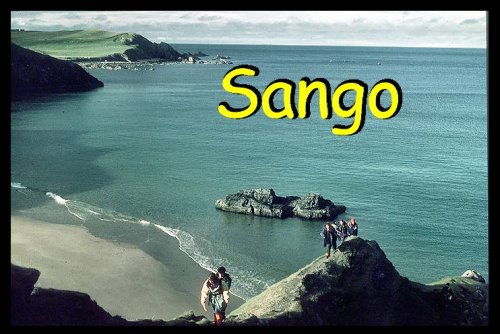

Click here for the Sango Bay Map
Click here for Sango Bay view
The Moine Thrust is marked by a thick sequence of mylonites carried on a discrete zone of displacement onto Precambrian or Cambro-Ordovician rocks that once represented the foreland of the Caledonian orogenic belt. Generally the scale of these displacements can only be surmised from the thickness of its mylonites - with many workers inferring slips in excess of 100km. A minimum estimate can however be established by direct observation. In the Durness area, outcrops of the hanging-wall to the Moine thrust that would otherwise have been eroded have been dropped down by post-Caledonian faults. Large tracts of Moine rocks lie at Faraidh Head, NW of Durness village. Their presence requires that the Moine Thrust has moved at least 12 km, the distance back to the main outcrop trace at Loch Eriboll. However, the thrust itself may be observed directly in Sango Bay.
The Sango Bay outcrops are clean and provide the most accessible exposures of the Moine thrust in the entire thrust belt. They deserve classic status, not only for these attributes and their importance in demonstrating displacements, but also for the spectacular exposures of crenulated mylonites ("oyster-shell rock"). The Moine Thrust carries these mylonites with a thin (2m) slice of far-travelled Cambrian quartzites onto the upper part of the Durness Group carbonates. Additionally this area also contains beautiful exposures of fault planes and associated breccias and gouges which link to structures which formed the offshore sedimentary basins through Devonian and later times. The key work on these structures was carried out by Hippler and Knipe (1990).
| Moine Thrust Belt front page | Northern areas introduction | location map for northern areas |